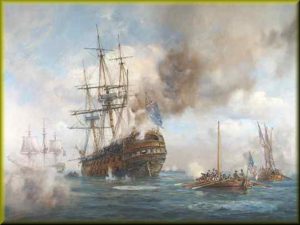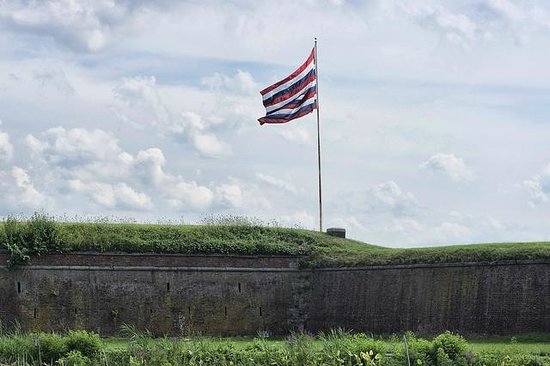Presentation Date: September 26, 2016
Did you know that during the 6 day siege at Fort Mifflin the 400 American’s inside the fort had only 10 cannon to defend against the British with 2000 troops, a fleet of ships, and 228 cannon? It was a cold and wet November in 1777 at Fort Mifflin (Named after General Thomas Mifflin), a wood and stone structure located nine miles from center city Philadelphia, on a muddy island in the Delaware River. What happened here may well have changed American history. But few people are aware of it.
Join us on Monday, September 26th as we welcome Elizabeth Beatty, executive director of the National Historic Landmark Fort Mifflin to talk about The Fort That Saved America.
A short introduction to our new website (https://arrtop.org) , along with a short business meeting will start around 7:00pm. The presentation will start at 7:30pm. MaGreks Pub and Grill will be running a 1/2 price special on burgers that night. We encourage you to join our membership for the very small and reasonable tax deductible amount of $20. If you join before December 2016, you only pay $15 in celebration of our 15 year anniversary.
In 1777 (from November 10th to the 15th), British troops bombarded the 22-acre fort with more than 10,000 cannon balls, eventually destroying the structure.
Inside the fort, a cold, wet and hungry garrison of 400 men suffered 240 casualties in the effort. So short were the Americans on ammunition that anyone retrieving a cannonball that could be fired back was promised a gill of rum — about four ounces.
The weather hurt the Continental soldiers in another critical way. With unusually heavy rains flooding the back channel, two British ships were able to sail up the channel and bombard the fort’s only unfinished walls at point-blank range. British Marines even climbed up to the crow’s nest of the HMS Vigilant and threw hand grenades at soldiers inside the fort.
With the fort walls collapsing around them from the incredible shelling, most of the Americans evacuated after nightfall on November 15th, rowing with muffled oars across the river to nearby Fort Mercer (now part of Redbank Battlefield Park, Gloucester, New Jersey).
The 40 men remaining at Fort Mifflin set fire to what was left of the structure, and then joined their comrades. But they left the fort’s flag flying, and they never surrendered.

Biggest Boom: The explosion of the 64-gun HMS Augusta in the Delaware River in October 1777 after running aground and being fired on by Americans at Fort Mifflin and Fort Mercer. Author Thomas Paine, of “Common Sense” fame, who was on the road between Germantown and Whitemarsh, wrote to Ben Franklin that the sound was “like the peal of a hundred cannon at once.” The Augusta was the largest ship ever lost by the British to the Americans in two wars.
What they accomplished: The troops at Fort Mifflin bottled up 250 British ships in the Delaware River for about six weeks, destroying several — and preventing food, clothing, gunpowder and munitions from reaching the British army in Philadelphia.
By holding “to the last extremity,” as General George Washington had ordered, the men at Fort Mifflin gave Washington time to move his exhausted troops to Valley Forge for the winter — and very possibly saved the country.
After the war, Fort Mifflin was rebuilt. It served as a prison during the Civil War, and a naval munitions depot during World War I and II.

Elizabeth has been Executive Director at Fort Mifflin on the Delaware since September 2010. Her career includes diverse experience, from public accounting to historic site management and program development.
Beth earned a Bachelor of Science degree in Business and Economics from Lehigh University and spent the early years of her career at Price Waterhouse. Following an interest in historic preservation and programming, she joined the staff at the Barclay Farmstead in the 1990’s. As Executive Director at Fort Mifflin she enjoys varied responsibilities including program development, restoration, fundraising, marketing and strategic planning. Plus, she gets to fire the cannon occasionally!
For donations to Fort Mifflin, or to volunteer, go to: www.FortMifflin.us, or call 215-685-4167.

